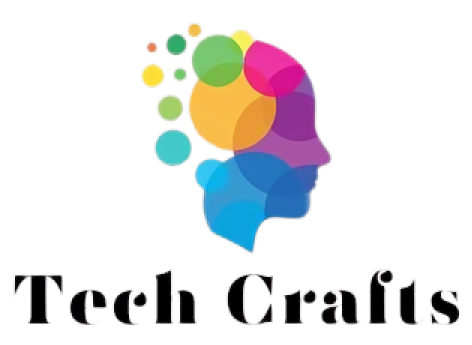In today’s data-driven world, data consumers are at the heart of decision-making, innovation, and business intelligence. But what exactly is a data consumer? And how do they fit into the broader data ecosystem?
Whether you’re working in IT, business strategy, marketing, or analytics, understanding the role of data consumers is essential for creating effective data pipelines, dashboards, and insights.
In this article, we’ll cover:
- What a data consumer is
- Examples of data consumers across industries
- Their role in data workflows
- Tools used by data consumers
- Best practices for enabling data-driven decisions
What Is a Data Consumer?
A data consumer is any person, system, or application that accesses, interprets, and uses data to gain insights or take action. Unlike data producers—who generate or collect data—data consumers rely on transformed, cleaned, and structured data to support their roles.
Key Characteristics:
- May or may not have technical skills
- Uses dashboards, analytics platforms, or reports
- Relies on accurate, timely, and accessible data
- Needs data for decision-making, monitoring, or reporting
Who Are Data Consumers? (With Examples)
| Industry | Data Consumer Example | Use Case |
| Marketing | Marketing manager | Tracks campaign performance via analytics tools |
| Finance | Financial analyst | Reviews budget trends and forecasts |
| Healthcare | Medical administrator | Monitors patient records and hospital metrics |
| Retail | Store manager | Analyzes sales and inventory dashboards |
| IT | Business intelligence analyst | Queries data warehouses for real-time insights |
| Product | Product manager | Uses user behavior data to shape feature roadmaps |
Data consumers can be technical (analysts, engineers) or non-technical (executives, marketers).
Data Producer vs. Data Consumer
| Function | Data Producer | Data Consumer |
| Role | Collects, creates, or logs data | Uses processed data to make decisions |
| Examples | Sensors, APIs, data engineers | Analysts, executives, reporting tools |
| Skill Level | Often technical | Can be technical or non-technical |
| Output | Raw or structured data | Visualizations, KPIs, dashboards |
Both are vital in the data lifecycle, working together to turn raw information into business intelligence.
Tools Used by Data Consumer
To interact with and derive value from data, data consumers rely on:
Business Intelligence Tools
- Tableau
- Power BI
- Looker
- Qlik Sense
These platforms help non-technical users visualize trends and KPIs.
Data Warehouses / Data Lakes
- Snowflake
- Google BigQuery
- Amazon Redshift
Used by more advanced data consumers (e.g., analysts) who query structured datasets.
CRM and Marketing Platforms
- Salesforce
- HubSpot
- Google Analytics
Enable data consumers in sales and marketing to access customer data and performance metrics.
Spreadsheets & Reports
Still a widely used tool, especially in smaller organizations or for simpler insights.
Why Data Consumers Matter
Data consumers transform data into action.
Their insights drive:
- Strategic planning
- Product development
- Customer experience improvements
- Financial optimization
- Operational efficiency
Insight: A data consumer’s decisions are only as good as the data they access. That’s why data quality, accessibility, and literacy are key enablers.
Best Practices to Empower Data Consumers
- Ensure Data Accessibility
Use cloud platforms or self-service BI tools so users can access data anytime. - Maintain Data Quality
Inaccurate or outdated data erodes trust and leads to bad decisions. - Implement Role-Based Access
Keep sensitive data secure while giving users the data they need. - Provide Training & Support
Educate non-technical users on data literacy and tool usage. - Automate Reporting
Use scheduled reports and alerts to keep decision-makers informed.
SEO Keywords to Include in Content
For improved rankings, use these keywords naturally:
- what is a data consumer
- data consumer role
- examples of data consumers
- data producer vs data consumer
- tools for data consumers
- data consumer in analytics
- data consumer in data pipeline
Incorporate these in your headings, meta tags, image alt text, and internal links.
Conclusion
In the digital age, data consumers are the driving force behind informed business decisions. Whether they’re executives reviewing dashboards or analysts digging into datasets, their role is critical in turning data into value.
By empowering data consumers with the right tools, training, and trustworthy information, organizations can unlock new levels of performance, innovation, and customer satisfaction.
FAQs
Q1: Can a person be both a data producer and a data consumer?
Yes. For example, a marketer may generate campaign data and later analyze the same data in a report—acting as both producer and consumer.
Q2: Do data consumers need to know SQL?
Not always. Many data consumers use visual tools like Power BI or Tableau. However, technical users like analysts may use SQL for custom queries.
Q3: How do I improve the experience for data consumers?
Improve data accessibility, maintain clean and structured data, provide dashboards, and offer training to non-technical users.
Q4: What’s the difference between a data customer and a data consumer?
A data customer may refer to an external party purchasing data, while a data consumer typically refers to internal users within an organization.
Q5: What are the risks of poor data consumption?
Poor data literacy, low-quality data, or inaccessible tools can lead to bad decisions, wasted resources, and reduced trust in analytics.
Also read: USPS Anywhere Mailer: What It Is and How It Works for Direct Mail Marketing




